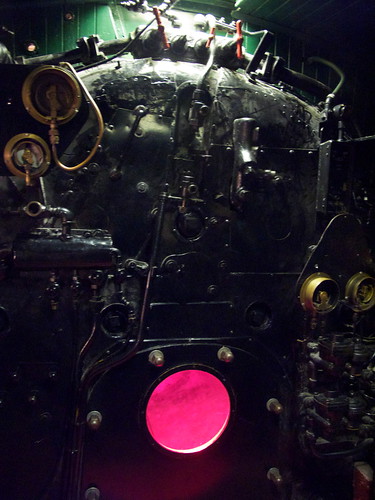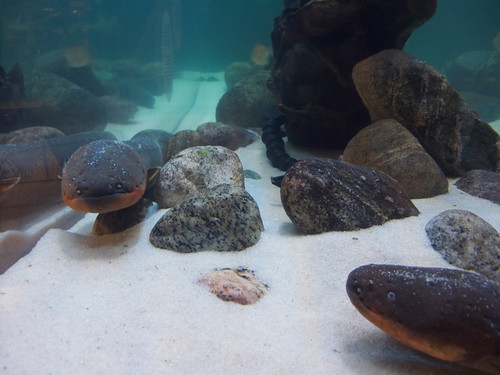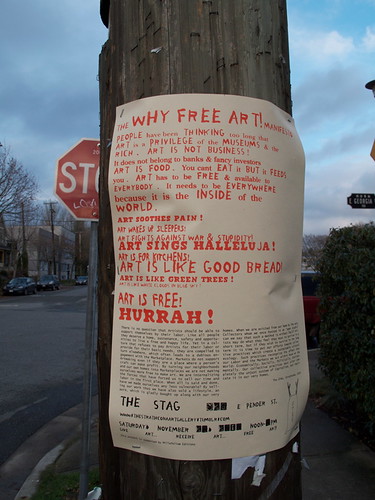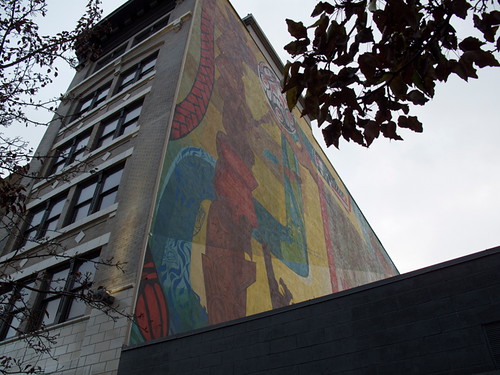On Saturday I went with some other BC Humanists to the premier of Leave of Absence. Written by, and starring, Lucia Frangione, it deals with life in a small Catholic community—life and death and spirituality and sexuality; also rigid orthodoxy, misogyny, homophobia, and bullying. It is at once a meditation on Catholicism, and a passionate rant against small-minded bullies and those who stand by and do nothing while their peers suffer.
The play’s five characters are all flawed and three-dimensional, with weird contradictory facets that make them deeply human, in some ways tightly connected and in others so far apart, playing off each other in lots of interesting ways.
Father Ryan, undoubtedly the sanest of the bunch, open-minded and compassionate, a wonderful father figure to his congregation, who never really had faith in God but kind of wishes he did. His objectivity is constantly threatened by his unacknowledged love for…
Single mother Greta, a little bit turned on by her daughter Blake’s budding sexuality, in love with Father Ryan and subconsciously flirting with him, not terribly religious but valuing the church because it makes her feel safe and protected and childlike.
Leap, Greta’s ex from many years ago and Blake’s biological father, a boxer, very macho and sexist and out of touch with his feelings, but metrosexual enough to primp and moisturise and trim his pubes. The play opens just after his wife dies, and half the plot deals with him and the community working through their grief. Though Leap is very blunt and appears at first not very smart, he learns to appreciate his wife’s collection of books and dreams. His wife, never seen, also has layers: though she was probably suffering from depression (which Leap doesn’t take seriously), she had a rich inner life and planned to travel to Europe some day.
Teacher and worship leader Martha waxes eloquent about misfit saints, female mystics and the Feminine Divine, and maybe-possibly getting off on the sexually charged hymns. But when it comes down to it she has to play by the rules and doesn’t looks like she really believes that kind of revelation can happen in real life anymore.
15-year old Blake starts out as a bit of a rebel and outcast and gets more so as the play progresses. She starts out ironically rewriting the Apostles’ Creed, but then, inspired by Martha’s sermons she receives an actual revelation and starts (maybe) communing with the God the Mother directly. At the same time she’s plagued by false rumours of being a lesbian and increasingly severe bullying, culminating in a sexual assault that leads to her death.
And so the play ends just as it began, with a death. Ryan and Greta finally acknowledge their love for each other and he invites her to join him on the St James pilgrimage.. Leap discovers new worlds in his wife’s books and may do some traveling of his own. And Martha is left to pick up the pieces and carry on with an inexperienced new priest she doesn’t like much.
The tragedy here, I think, is that all these people’s flaws and bad situations are made worse by religiosity in general, and the Catholic Church in particular. A culture of sexual shame and homophobia leads to Blake’s bullying and death—and it’s not just asshole teenage boys either. The bishop—unseen and unheard—lays down the law first by stopping Martha from preaching about rebel mystics and a Mother God, then by nixing an anti-bullying program because it could be seen as promoting homosexuality. Which is an “intrinsic disorder” according to church doctrine, as we all know, and we can’t have a priest suggesting it’s not okay to bully or discriminate based on sexual orientationintrinsic disorders. And if the bishop ever learns about Blake’s death, it will be in some footnote of some report, and he will not give a shit.
And what are we to make of Blake’s spiritual experience? Whether or not it was “real” is left deliberately ambiguous, and that’s fine. What’s interesting to me, though, is the contrast between stories of female mystics and the reality of having one in your class, spray-painting the girls’ washroom door with a crucifix and generally being kind of a pain. It goes to show, religion-born ideals and myths crash headlong into reality all the time, and the collision isn’t always pretty. At best, you get people like Father Ryan who are able to relax and adapt their beliefs to a changing world. At worse you get people who either deny reality or bend it to their fantasies. Sometimes you get people who live with one foot in either world.
And I have to ask: if she hadn’t been inspired by Martha, if she hadn’t lived in a culture steeped in tales of saints and mysticism and complicated Catholic tradition, would Blake even have had her revelation? And if not, how would she have turned out? Better? Worse? I guess we’ll never know.
Speaking of Ryan and his lack of revelation… I found it more sad than anything. He basically chose to believe in God, not out of conviction, but because it seemed just as valid as unbelief. This is a very silly and wrong position to take. True, he’s led a good life and has few regrets, but again I have to ask: if he hadn’t been given the false dichotomy of belief vs. anti-belief, what else could he have done with his life? Kept on studying Physics, inspired others to fall in love with the Universe? Again, who knows?
The ending, though, robbed the play of some of its power. Blake’s death was too shocking, Father Ryan’s final speech (about him and the Church being absent from Blake’s life) too preachy; both clashed hard with much of the rest of the play. Still, for the most part, it worked: Leave of Absence is a deeply moving and thought-provoking story, wonderfully acted, a multifaceted look at a strange and multifaceted religion.







